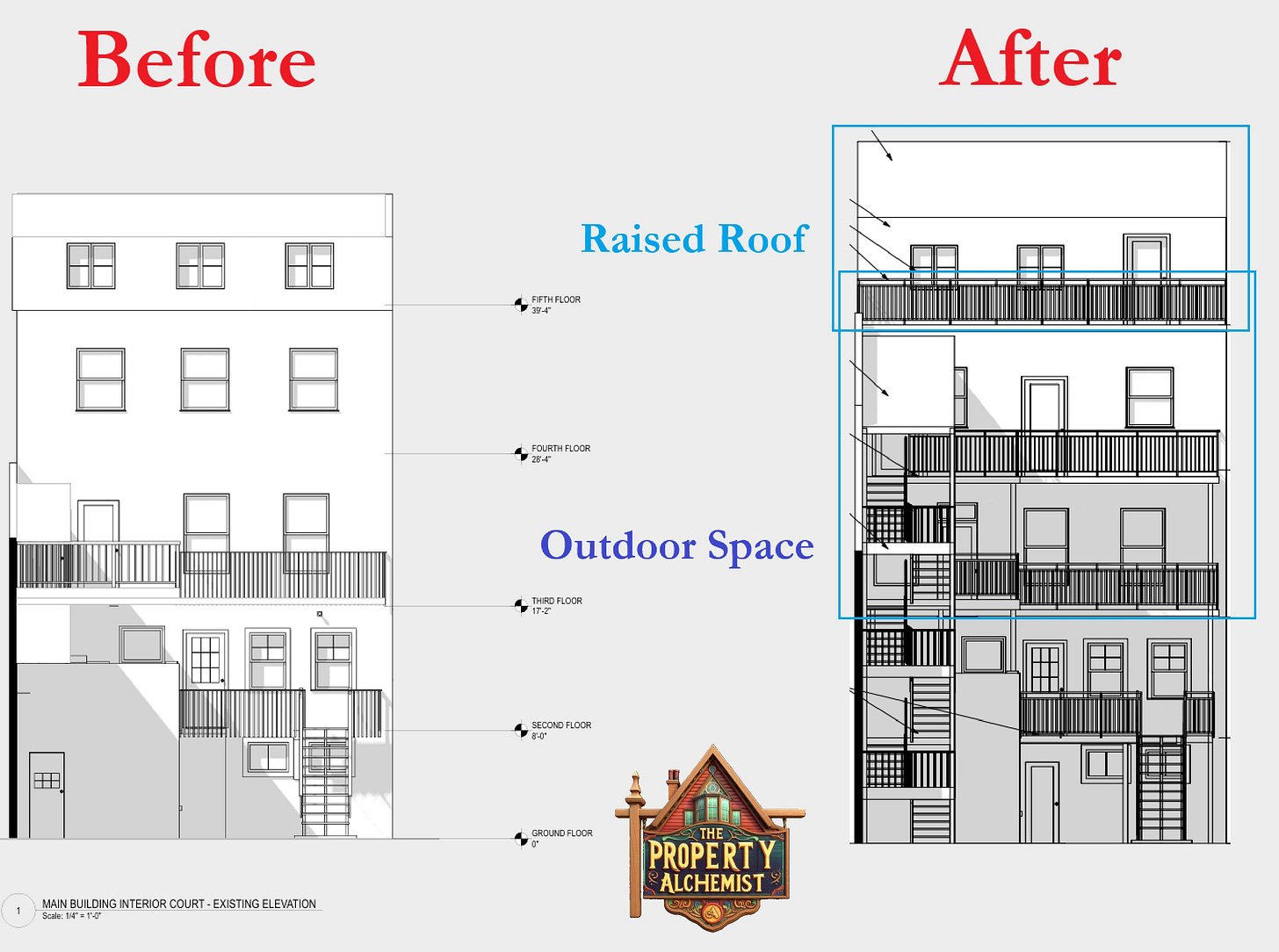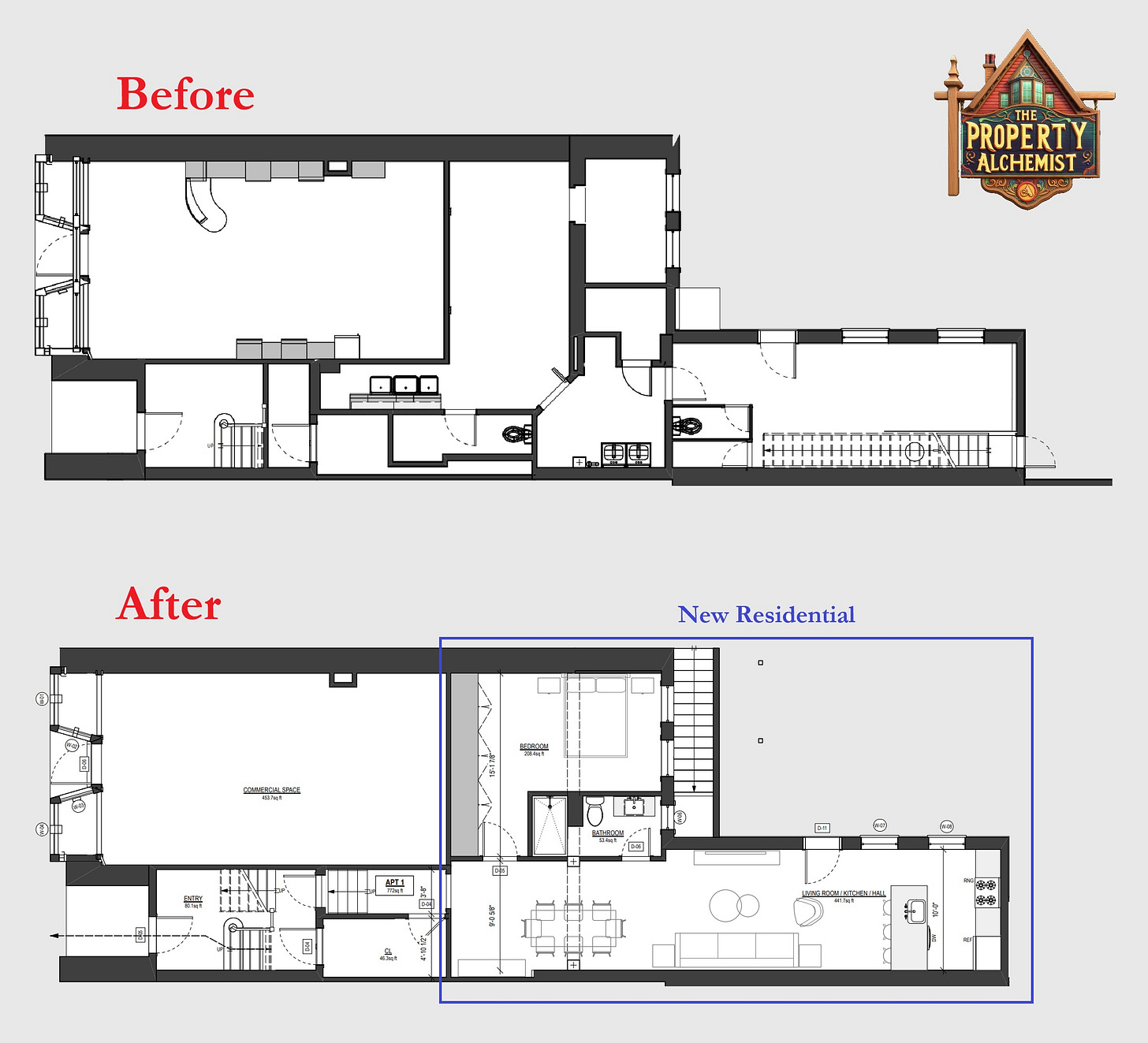Beyond the Flip: Innovative Strategies for Real Estate Success
Webster’s English dictionary defines Arbitrage as “the nearly simultaneous purchase and sale of securities or foreign exchange in different markets in order to profit from price discrepancies.” That last part is the most important, price discrepancies between markets. In financial markets, these differences may only last milliseconds. In real estate, price discrepancies can last for years. There are no algorithmic hedge funds trading real estate in real time. Here, the competition is very different. Financial markets know there is a price discrepancy because they are looking between two markets. In real estate, the price discrepancy is a function of condition and location. You can’t just look up the data and execute a trade, but you can buy a property with bottom-of-the-market rents and renovate it into the luxury market.
To succeed in any market, you need to have an edge over other investors. I don’t have more money than the other investors, I can’t take more risk than the other investors, and I can’t build it cheaper. Like any good market disruptor, I can only compete on brains; do it smarter. That’s our strategy: finding deeply undervalued properties with value to unlock. Over time, I have come to realize that many investors are trapped by their frame of reference; they can only have one execution strategy they copy and paste. The most well-known version of this is the buy-and-flip model, known for attracting new investors looking for a way to make a quick buck. Real opportunities are most fruitful when the fewest people know they are there. Everything has a risk, but the more people fear that risk the more it will get discounted. The risk does not have to be real, the feeling of fear is more than enough for most investors.
I remember going to the open house for what would become my first investment property. We were walking down Fifth Avenue in Brooklyn and had just turned onto the street the house we were about to tour would be on. I noticed there was a couple walking about 30 feet ahead of us and I wondered to myself if they were headed to the same house we were. Soon enough we were a few doors down from the property when I noticed the couple ahead of us turning toward the house. We followed, watching as the couple walked up the stairs and stopped at the threshold. Both the man and woman took on an unnatural leaning pose, as if something disgusting would happen if they crossed the building’s threshold. Within seconds, the woman straightened her back, twisted her hips, and yelled at her partner, “Oh, hell no! I would rather die.” It took me a long time to realize how good an indicator that interaction was. The couple before us only saw the vestibule of the house and made an investment decision. Their mistake was not gathering all of the information before saying ‘No.’ The best opportunities require significant effort to investigate. If “Not as bad as it looks” is the strategy, you have to uncover the unseen value that causes the mispricing. If it was obvious, it would already be priced in.
Most investors want a strategy they can systematize and repeat. These strategies only focus on one project type, in an effort to create value through operational efficiency. That leaves entire categories of investment properties that do not fit neatly into popular strategies off the radar of many investors. Simple economics, less competition means more opportunity. Thinking creatively is the key. Most people only see what is there. Finding a diamond-in-the-rough development opportunity is about seeing all the things that could possibly be. If there are hundreds of building configurations possible, each decision becomes a little ‘arbitrage.’ If I have $10,000 to make improvements and there are hundreds of ways to spend that money: bathrooms, kitchens, new mechanicals, insulation, or hundreds of other options? The answer is not that difficult, pick the investment option that has the best return.
Here’s the kicker, as a long-term investor I know that I will keep investing in property. So, one always has to ask, “Is it better to buy another property or invest more in an existing property?” The answer here is also quite simple, the one that makes the most money. So, whenever I analyze a property, I assume there will also be a next one. So, if I purchased the current property with an existing 8% cap rate, which I assume will be the prevailing rate in the future, it would be smartest to do every single improvement that would increase the cap rate before moving on to another property. With that frame of reference in mind, let’s reexamine our latest deal using this strategy.
The Troy property was purchased nearly vacant but contained livable units that could return a cap rate north of 10%. In reality, there is a lot of deferred maintenance that would come back to bite you in the butt and make that number much lower. Our objective is to maintain that cap rate for the base improvements and find additional improvements that will raise the cap rate even higher. In this property, we considered a number of strategies:
Attic conversion: Raise the roof to enhance the ceiling height and add rentable space. The attic of our current project has about 600 square feet of space where the ceiling is too low for use. Raising the ceiling effectively adds an entire 1-bedroom apartment.
Add outdoor space: Adding balconies, terraces, and patios. Outdoor space, especially the private kind, is one of the most profitable amenities for a landlord.
Basement conversion: Dig down the basement floor to enhance ceiling height and add significant rentable space to the unit above. A low-cost option converts the space for rentable storage or bike parking.
Commercial to residential conversion: Changing the usage of space based on the better rents. The market for residential space is much more competitive than commercial space in this area.
Building addition: Adding new space. On this project, adding about 200 sqft of new space on the first floor will enable two studio apartments instead of a single 1-bedroom.
Amenities: In-unit washer/dryer, on-site storage.
Estimating the returns of individual project components is not easy. While it is possible to look at the average difference between units with and without the amenity. (Math nerds among you will shudder at my simplification of a multi-variate optimization problem.) What that data generally misses is that high-amenity units tend to have shorter vacancy periods and higher retention rates. Nearly all real estate financial models use a benchmark 5% annual vacancy rate, as well as capital reserves to fund unit turnover. For those benchmarks to be useful, they need to represent an average outcome from a property of average condition. When talking about cap rates between 4% and 10%, adding 1 to 3 percentage points to the cap rate turns an average deal into a home run.
So, where’s the arbitrage? The first part is in latent revenue opportunities untapped by the current property and unpriced by the market value. The second part is in the reduction of operating costs. A vast majority of investment properties sacrifice massive operating efficiencies at the altar of reduced capital outlay. This brings us to the third arbitrage, reduced cost of capital. While many in real estate will borrow as much as they can, borrowing working capital to operate your business, for example, construction loans or bridge loans, leaves little room for error and eats up a lot of potential profits. If you use your own working capital, you can refinance the property at a higher valuation at the end of the project to get your working capital back out. If you really hit a home run, you will create enough equity to return all working capital along with an equity cash-out, that can fund the downpayment on the next property. If you find properties with enough latent value that you successfully unlock, your business development flywheel can spin indefinitely.
It is crucial to emphasize the importance of proactive property management and strategic capital allocation. Efficiently managing a property involves regular maintenance schedules, tenant retention programs, leveraging technology for property management tasks, and eliminating all low-value cost centers. In the process of developing a property, you will find cost centers that could have meaningful long-term implications, such as the upfront cost of insulation. In other words, to properly understand how to allocate your capital efficiently, you must grasp and be able to calculate present value.
Thinking of real estate as a series of ‘arbitrage’ opportunities offers a unique and lucrative opportunity for investors willing to think creatively and strategically. By identifying undervalued properties and implementing targeted improvements, you can unlock hidden value and achieve significant returns. The key lies in thorough research, proactive property management, and efficient capital allocation. As you continue to refine your strategies and adapt to market changes, you'll be well-positioned to capitalize on new opportunities and drive long-term success in the real estate market. Remember, the most successful investors are those who see potential where others see obstacles. We'd love to hear your thoughts and ideas! Please share any additional strategies or experiences you have in the comments below. Your insights could help fellow investors and spark new discussions. Happy investing!
If you've found value in these insights and want to continue your journey of real estate wisdom, we invite you to subscribe to The Property Alchemist.
Don't let your real estate dreams remain just dreams. Empower yourself with the knowledge and insights that can turn your investment visions into concrete reality. Subscribe to The Property Alchemist today and take the first step towards becoming a master of real estate alchemy. Your next successful project is just a subscription away!





